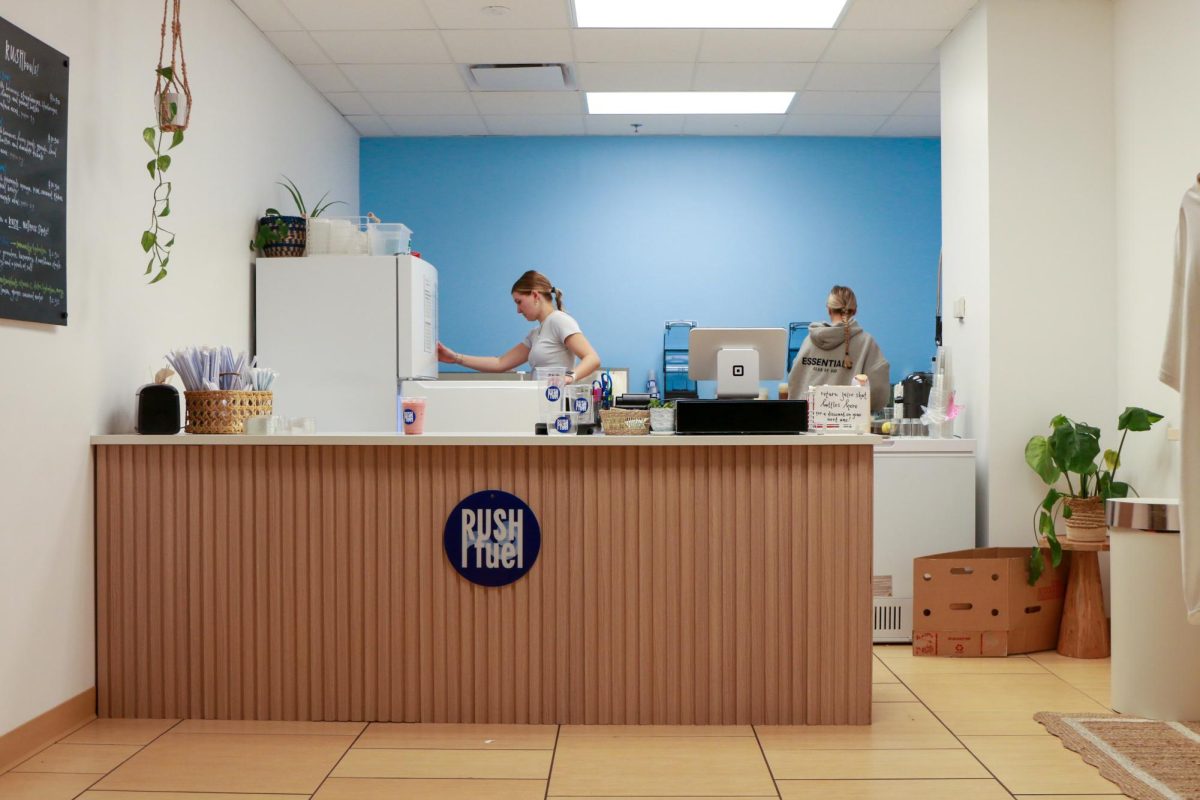The UM System Board of Curators met Thursday and Friday at UM-Kansas City to discuss the role of the board, finances and issues facing the UM System.
This is the first time that every position on the Board of Curators has been filled for a meeting in months. During the meeting, the board reviewed the university’s performance and discussed the future, making several large changes to the UM System Collected Rules and Recollections and how the UM System plans capital projects.
New curators Julia Brncic and Jon Sundvold and student representative Courtney Lauer took oaths of office.
####Revising Rules
The curators discussed a comprehensive review of the UM System Collected Rules and Regulations in order to modernize governance. They discussed a need for updated rules regarding faculty governance and firings, fundraising and facilities.
“We’ve done over the last couple of years a fair amount of updating and revision of our Collected Rules,” Board Chairman Maurice Graham said. “There’s still a lot of work left to do.”
Graham also mentioned the importance of involving constituents such as faculty and administration early on in the process. Because the nature of the task, the board does not yet have a timeline for the project.
“I think we’re all preaching to the choir,” Graham said. “We’ve all said for months we need to continue the process. We’ve agreed with the legislature we would do this and so it’s important.”
It is unclear when an overhaul of the Collected Rules was last completed, if it has ever been done.
####Audit
Four internal audits have been completed since the last curators meeting, focusing on the College of Human and Environmental Services, College of Arts and Science, Campus Stores Physical Inventory Count and MU Health Care Device Encryption.
Of the four audits, the College of Arts and Science received the highest risk rating. The college received a medium risk label, indicating “substantial risk related to fiscal oversight and internal controls surrounding fiscal processes,” according to the Internal Audit Quarterly Report.
“We identified in this audit inconsistencies in policy related to faculty award programs between the system policy, the campus and the college,” interim Chief Audit Executive Michelle Piranio said.
The College of Arts and Science audit also found that the Geographic Resources Center and the Missouri Spatial Data Information Service have “operated independently with little oversight and financial accountability to the College,” according to the report. The audit report also includes a summary of the management action, which focuses on improving policies and increasing accountability.
####Capital Projects and Finances
The Board of Curators unanimously passed a motion Thursday that will give the board increased responsibility for the university’s funding, investments and infrastructure projects.
“We’re gonna discuss and we’re gonna show our investments and our facilities really have not been adequate in the last 15 years, and they could also be prioritized better than they have been, and I think this new process is critical to changing that,” Chief Financial Officer Ryan Rapp said.
Currently, the Board of Curators has little involvement in project and capital plan recommendations, and plans are crafted on an annual basis.
Officially beginning in 2019, the board will annually review projects from a financial standpoint to ensure balance between funding new projects and maintaining the university as it is. This represents a change to a prioritized rolling five-year capital plan that increased board involvement in project recommendations, capital plan approval and the review of projects after they are approved.
The long-term plan will also focus on academic excellence, revenue growth opportunities, resource allocation and utilization of administrative scale, efficiency and collaboration.
“In my view, what we’re doing here is a significant change in the culture of the board, and it is a change [in culture] that I hope goes on far after I leave where it’s the board asserting that it will no longer be reactive, will no longer be rubber stamps, that it will be proactive and that it will assert its role in making strategic decisions,” Curator David Steelman said.
Despite increasing debt, with post-employment benefits adding $275 million to liabilities and decreasing academic revenue, the UM System continues to have health care revenue grow along with that from grants and contracts.
Drops in enrollment and budget cuts from the Missouri Legislature led the UM System to announce a series of budget cuts, including program discontinuance and layoffs, earlier this year. Future cuts will continue to be made to increase faculty pay, and reallocation within the budget is expected.
Additionally, the board reviewed construction plans for the MU School of Music. The $24-million project is expected to be completed by August 2019. Loeb Hall and the Fine Arts Annex will be demolished, eliminating $5.5 million in facilities costs.
####MU Health Care
The board heard a report on MU Health Care by CEO and Chief Operating Officer Jonathan Curtright.
MU Health Care has been investing in staff, particularly nursing staff, and is currently working to create accelerated nursing programs to get more nurses into the workforce and programs to get nurses working on weekends and in the evenings, Curtwright said.
Facility investments, such as the Ashland family medicine clinic that opened last month, have also been priorities. MU Health Care has also invested in the university, with a one-time support of $3 million to MU, $16.3 million to the School of Medicine, $1.1 million to School of Health Professions and $500,000 to Sinclair School of Nursing.
Strategic initiatives for 2017 and 2018 include the expansion of MU Health Care as a statewide resource and the growth of select service lines.
####Current struggles and rebranding
On Friday, the board heard from UM System President Mun Choi, MU Chancellor Alexander Cartwright and representatives from branding company 160over90.
In May, university leaders signed a three-year, $1.27-million contract with the company to improve the university’s brand. The agency began work on campus two weeks ago.
In his report to the board, Choi explained the results of the 2016 Campus Climate Survey.
“The results also indicate that we have some work to do,” Choi said. “For example, 18 percent of the respondents have experienced exclusionary conduct within the last year. And while this result appears high, it is within the range that Rankin & Associates found at other universities.”
The board will meet next on Dec. 7 and 8 at UM-St. Louis.
_Edited by Sarah Hallam | [email protected]_













